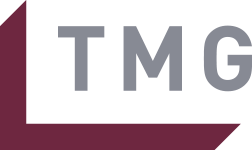By Jim Messina
New York Times
With just days left in the 2016 presidential election, Americans are wondering if polling is accurate or if we’ll see a Brexit-style shock. It’s not just voters who ask these types of questions. On the eve of Election Day in 2012, as the campaign manager for President Obama’s re-election, I was asked to meet him at a rally in Milwaukee.
“Gallup has me down by three points, and other polls have me trailing, tied or with a slight lead,” the president said. “Your models have this race basically over. Why are we right and they are wrong?”
The best campaigns don’t bother with national polls — I’ve come to hate public polling, period. In the 2012 race we focused on a “golden report,” which included 62,000 simulations to determine Mr. Obama’s chances of winning battleground states. It included state tracking polls and nightly calls from volunteers, but no national tracking polls.
In Milwaukee, I assured the president that the golden report was predicting a victory, with 332 electoral votes. On Election Day, that was the exact number of electoral votes the president won.
Today, campaigns can target voters so well that they can personalize conversations. That is the only way, when any candidate asks about the state of the race, to offer a true assessment.
Hillary Clinton can do that. To my knowledge, Donald J. Trump, who has bragged that he doesn’t care about data in campaigns, can’t.
When we started the president’s re-election effort, we instilled a team culture in which our assumptions were tested and our work was constantly measured and refined. No detail went overlooked: We did a study of how far the reception desk should be from the front door of a local campaign office to make volunteers feel welcome.
I could also point to hard numbers anytime President Obama wondered if yet another visit to Ohio was a good idea. (It always was!) The number-crunching that campaigns do ultimately leads to a rally in a high school gym in a state that is (or might become) important — something political junkies would do well to remember in the closing days of this election.
For example, in recent days, Mr. Trump has campaigned in New Mexico, a state he has no chance of winning. Candidates can get more money and adjust their message, but the one thing they can’t do is make more time; every wasted hour in a noncompetitive state is a grave error. Mrs. Clinton continues to go on the offensive in states like Arizona, where the race is close.
“Big data” is a buzzword, but that concept is outdated. Campaigns have entered the era of “little data.” Huge data sets are often less helpful in understanding an electorate than one or two key data points — for instance, what issue is most important to a particular undecided voter.
With “little data,” campaigns can have direct, highly personalized conversations with voters both on- and offline, like an ad on a voter’s Facebook page addressing an issue the voter is passionate about. In 2016, we see that online political engagement rates (especially for young voters) are at a historic high.
This is why campaigns no longer pay much attention to public polls, which often use conversations with just a few hundred people to make predictions about the entire electorate. Getting a truly representative sample has become ever more difficult because of the growing percentage of households with only cellphones, the number of voters who prefer to speak a language other than English, and the difficulty in contacting younger voters, who generally don’t have landlines.
Smart campaigns can use “little data” to solve these problems. They look at public data sets that list each registered voter’s name, address, party registration and election participation history. By analyzing these voter files, they develop an accurate idea of the makeup of the electorate. Rather than rely on voters’ (frequently inaccurate) estimates of their own likelihood to vote, these campaigns look at their turnout record, thus getting a very precise idea of who “likely voters” really are. The media outlets that conduct national polls usually can’t afford to do this.
Even the best public polling can tell us only about broad categories of voters — not much help guiding a personalized conversation via text message, as is more common with voters in 2016 than it was even in 2012.
When I work with campaigns, I prefer to focus on sophisticated modeling to make predictions about specific voter behavior. We can identify the key voters — not just big groups like “independent women” — with whom we want to communicate at each stage of the election, and what we want to say to persuade them or remind them to vote. For instance, campaigns in Florida no longer look at the Cuban-American electorate as a monolith — we know that younger Cuban-American voters are very supportive of the Democratic Party.
You see this clearly in the early-voting numbers. It’s crucial for campaigns to “bank” their voters and make sure their key targets vote early. I suspect the early-voting numbers coming out of Nevada contributed to the Trump campaign’s decision to spend less money on TV ads in the state.
As we move into the final days of the 2016 election cycle, the smart money is on the campaigns — like Mrs. Clinton’s — that are leveraging the power of data to find every last vote they can.

